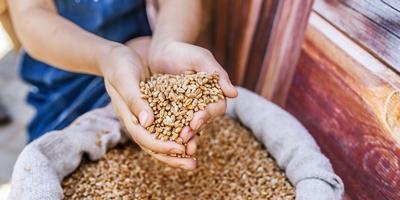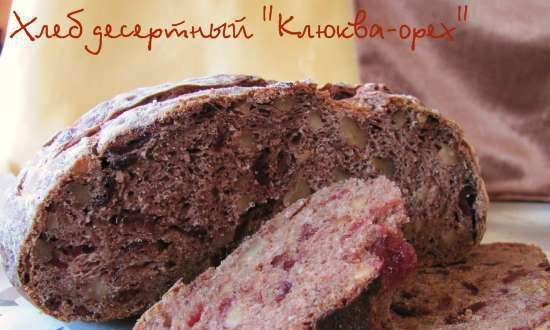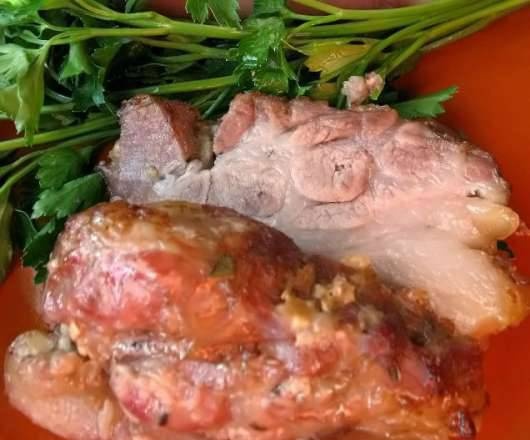|
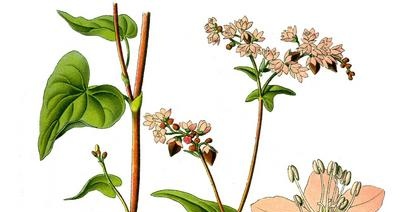 Ever since man began to rule the earth, his life is connected with his daily bread. The basis of bread is starch - and wheat, and millet, and rye, and rice, and buckwheat. Ever since man began to rule the earth, his life is connected with his daily bread. The basis of bread is starch - and wheat, and millet, and rye, and rice, and buckwheat.
Starch is not burned as quickly in the body as simple sugars. It is enough for a long time. It provides satiety. Until now, still primitive human tribes collect wild starches. Australian aborigines - wild yam tubers and pine-like araucaria seeds. Indians of the Andes - tubers of wild potatoes and nasturtium. California Indians cook acorns for future use.
Most of humanity uses cultivated plants. They prefer cereals. About half of the people chose rice. The other half is wheat with rye. However, there are areas where they prefer something completely different. Not always optional. Often forced. Where is the corn. Where is the plague. Where is Gaoliang.
Wild animals greeted the appearance of cultivated starch plants with enthusiasm. She quickly restructured her diet, sensing that grains or tubers grown by humans are more nutritious and, in any case, no worse than wild nuts and acorns. However, during raids and raids on plantations, they usually observe the measure, and for the damage caused to fields and vegetable gardens, they pay the price by destroying pests - insects and weeds. Humanity does not always notice and appreciate this benefit.
Is it worth breeding buckwheat? Such a question was asked to readers in 1886 by the Russian "Agricultural newspaper". And more than once. In four issues the same plea was repeated - to deal with the capricious buckwheat. Four years later, the newspaper returned to the problem at hand. This time the question was posed bluntly: should we leave the buckwheat culture? Then a very pessimistic article “Forgotten Bread” appeared. Other printed organs did not lag behind. "An endangered plant," said the magazine "Khozyain" in 1901.
What's wrong? Why should everyone's favorite buckwheat porridge disappear from the dinner table? And buckwheat pancakes? Why is buckwheat, which gives not only grain, but honey in addition, turned out to be “forgotten bread”? After all, quite recently in Russia it was the first bread! Russia was considered the world's first buckwheat power (by the way, and now too!).
In difficult days, buckwheat has always rescued Russians. When a bread beetle fell on wheat in the middle of the last century, the peasants remembered about buckwheat. She replaced wheat and saved from hunger. She attracted not only porridge and honey. There were three other virtues that no cultivated grain could boast of.
First, it could grow on such lean and poor soil where other crops failed. Second, it did not require deep plowing. Dispensed with the smallest. And most importantly, she drove the weeds from the fields. Buckwheat was definitely specially created for the poor peasant fields of Central Russia with their eternal lack of fertilizers, shallow plowing and the prevalence of weeds.
Weeds were dealt with quickly. Even the most powerful of them nikli and wilted under the canopy of its wide leaves. There was tropical darkness. Even aphids - the eternal scourge of orchards and vegetable gardens - were removed from the gloomy unruly. And in general, the pests tried to bypass this creature.
 With such a winning situation, buckwheat quickly became fashionable. Most importantly, it did not require special care. And they lit it up so much that even the surplus appeared for sale. In the Chernigov province, a fourth of the arable land was occupied by this crop. It was introduced on a grand scale in the Kursk and Saratov provinces. The Oryol peasants acted the wisest of all. They not only expanded the buckwheat wedge, but put waste into business - husk, husk that remains when peeling grain into cereal. The husk was replaced by firewood. It burned as hot as coal, and was worth nothing. They began to refuse firewood both in cities and in estates. And even though the woodcutters had to look for a new job, how many trees survived! How many forests have survived from the felling! With such a winning situation, buckwheat quickly became fashionable. Most importantly, it did not require special care. And they lit it up so much that even the surplus appeared for sale. In the Chernigov province, a fourth of the arable land was occupied by this crop. It was introduced on a grand scale in the Kursk and Saratov provinces. The Oryol peasants acted the wisest of all. They not only expanded the buckwheat wedge, but put waste into business - husk, husk that remains when peeling grain into cereal. The husk was replaced by firewood. It burned as hot as coal, and was worth nothing. They began to refuse firewood both in cities and in estates. And even though the woodcutters had to look for a new job, how many trees survived! How many forests have survived from the felling!
As the development of buckwheat fuel began to accumulate ash, however, resourceful Oryol peasants found use for it too. Suddenly, many potash factories appeared all over southern Russia. Potash was obtained from buckwheat ash of the highest quality. Ash went in great demand. They paid ten times more for it than for ordinary rye. Thus, buckwheat was the only plant in the world that did not produce any waste. Ideal for modern farming and conservation!
Alas, the buckwheat boom did not last long. By the end of the century, in about 30 years, the production of cores had decreased by three times.
Why? They began to say that the cause of everything was buckwheat disease.
Indeed, there is such a misfortune. Its essence is as follows. Believing in the usefulness of our friend, they began to feed the cattle and buckwheat greens. And then curious facts emerged. If black cows were fed, everything went well. If white - the disease developed. The eyelids were swollen, the ears sagged. A rash was spreading over my body. Burenki stood with bowed heads, dejected and indifferent to the shining sun and blue sky. However, as soon as they were transferred to a dark barn, the symptoms of the disease disappeared - and after a few days the horned beauties again gave out the prescribed portion of milk. The sheep behaved in the same way.
Of course, one story with black and white cattle could not decide the fate of buckwheat. They continued to look for the reason. And they paid attention to the harvests. We compared them over several years and realized: they have no constancy! Now the grain bins are bursting, then the bottom sections are empty. True, in good years the capricious creature gave a hundredfold for a forced hunger strike, but it was never possible to say what lay ahead - gain or loss?
The British, who loved the kernel no less than ours, in despair, abandoned sowing it altogether. If they grow a little, then only for ... pheasants! They found a substitute for themselves - oatmeal. With oats, the hassle is much less.
Russian agronomists did not take the easy path.
We decided to find out the problem to the end. And in 1898, the Shatilov experimental station in the Oryol region received a special task from the Ministry of Agriculture - to find out: what caused the inconstancy of yields?
Indeed, what? What is lacking in an unassuming plant? What's the matter? In the soil? In the climate? In the plant itself? Agronomists started with the soil.
And it is no coincidence.
Dung is the best and most reliable elixir that is able to breathe life into the impoverished, plowed soil - for buckwheat, it seemed, was unnecessary. It was believed that he was even harmful to her! Contraindicated! The farther from the manure heaps, the higher the yield - agronomists have already learned this.
Observing the truth, I confess: the buckwheat grown on the manured fields is not bad at all. She's downright gorgeous. Tall, prominent, lush. However, her modest companion from empty soil yields three times, or even ten times more grain. In a tall and beautiful woman, all the juices go into greenery.
The plant is fattening. There is almost nothing left for the grain. And how surprised the scientific world was when one day it was possible to grow the highest yield on a field with manure. 180 poods were received from the tithe, but on an ordinary, meager field, only 5! At first they could not understand what was the matter. We checked the manure. Is it ordinary? No, not quite ordinary. He was taken from the barnyard, where the cows were given the obligatory addition to food - salt. And the manure was salted.
Many agronomists then rushed to pour salt under the buckwheat. Sometimes we got an increase in grain. Another time - no. But in general they understood: although buckwheat grows on empty soil, it is still not bad to add fertilizer. However, the reason for the impermanence of buckwheat remained unclear. Maybe it's the very nature of the plant?
Maybe. Buckwheat is a special plant. Start with flowers. They are different. In some, the stamens are higher than the pistils, in others, on the contrary. This "leapfrog" is not accidental. It serves as cross-pollination. The famous scientist Charles Darwin noticed the variety of flowers long ago and was the first to find out what role it plays in the life of a plant. Fortunately, in those years, buckwheat was still sown in England.
Nature's calculation is simple and accurate. Pollen from a long-stemmed flower should get on a long-styled one.Darwin called this method legal. If pollen from short stamens gets on long pistils, pollination is illegal. With legal pollination, more fruits are obtained. The offspring are stronger, healthier, more fertile.
Bees provide legal pollination. If there is an apiary next to the field, pollination is guaranteed. Beekeepers get excellent buckwheat honey. Healing honey. It is not for nothing that the townspeople chase him so when it begins
flu epidemic. Of course, wild bees, wasps and even common flies help to pollinate. But there are few wild bees and wasps left. They are inhabitants of uncultivated nature. They survived only in ravines and copses. And apiaries are not always near the field.
Therefore, agronomists in despair seize on the last resort. Use brute force. They drag a rope through the pink field, on which the rags are tied. Or a gauze cloth. The stems crumple. Flowers shake. The pollen gets on the pistils. However, who can guarantee that legal pollination will take place? The bee will do the job better. Sleeker. Faster. Moreover, for good pollination, you need to visit each flower five times in a row.
Insects are attracted to buckwheat flowers by an irresistible force. An expert on this culture L. Althausen told about how it looks in practice at the First Congress of Russian Agricultural Workers in 1902. The congress was called mainly because of the crap. Althausen reported on his experiments there. He divided buckwheat plants into two groups.
In the first, he covered the bushes with wire caps. In the second, I did not cover anything. He left the flying fraternity with complete freedom of action. The nets from the protected bushes were removed for a minute only in the evening, when the humming army scattered to rest. Here the plants were watered. Just in case, for safety, there was a student sentry with a broom. He drove away random midges.
Despite the double line of defense, the flies tried to storm the wire fortress. And not without success. Although the student furiously waved the broom at the moment of watering, they still broke through to the nectar. And they seemed to stick to the flowers.
The student grabbed the impudent guest by the wings. The violator squealed piteously, but the temptation was too great. It was not possible to drag the fly away from the flower.
In the same place where the sentry managed to repel the onslaught of midges, time stopped for buckwheat. The bushes that grew free had long borne fruit, and the foliage, already unnecessary, turned yellow and fell off. And under the nets, the leaves were still green and, although it was already September, the wide-open flowers glittered with nectar. He could be seen with the naked eye. These flowers, with all their appearance, required insects. They gave off a stupefying scent. He made the student dizzy.
So bees are a great power. However, they alone cannot solve the problem of buckwheat. We tried to surround the buckwheat fields with apiaries. The harvest has tripled. Seems like a lot? Let's count. Wheat per circle gives twenty centners per hectare. Buckwheat - five. If you create an ideal pollination regime, buckwheat will give three times more grain - fifteen centners. And the wheat will still not catch up. What's the catch now?
If we remember the relatives of the cultivated buckwheat, it turns out that they are all residents of damp places. Wild buckwheat climbs higher into the mountains, where it is wetter. Or huddle to the banks of rivers and lakes. There are also absolutely aquatic inhabitants - amphibian mountaineer with a two-meter floating stem. And the very companion of our table, having run wild, gets out from the fields to the shore of reservoirs and bears fruit there perfectly.
All this suggests that cultural buckwheat comes from humid places. Historians have long argued: where? We agreed that it was from the Himalayas. True, the name is a little confusing. Reminds of Greece. It is possible that the culprit of the commotion came to us from Greece. The Greeks got it from the East, from the Himalayas.
It is worth looking at the "portrait" of buckwheat, as it becomes clear: historians are right. It is very different from other grains: wheat, millet, rye. Those have narrow leaves. Often they are still covered with a bluish bloom of wax in order to evaporate less. Buckwheat has wide foliage - it's not for nothing that it shades and expels weeds.Wide and delicate leaf blades are a memory of humid Himalayan forests. A wide sheet evaporates uneconomically a lot.
The conclusion suggests itself. For buckwheat to produce excellent yields, it is necessary to create “Himalayan conditions” for it. More moisture. This is where I remember one piece of advice given by old agronomists: do not sow buckwheat far from the forest. She is more comfortable near the forest. The proximity of the forest, as it were, returns a certain share of the Himalayan atmosphere. The climate becomes smoother, the nectar does not dry out so quickly. In drought, nectar thickens and becomes inaccessible to bees. This old observation was recalled when they were looking for the cause of the inconstancy of buckwheat. Isn't it all the trouble that the forests were cut down and there is not enough moisture for buckwheat? The classic of agronomy I. Stebut was sure of this. He said so at the 1902 Congress.
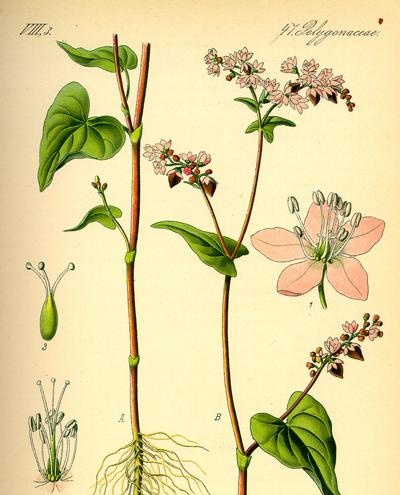 |
| Flora von Deutschland, Österreich und der Schweiz, 1885 |
We thought how else to get out of the impasse. Is there some way to escape the drought? And then Professor S. Bogdanov spoke at the congress and told how the farmers of the Poltava province get out of a difficult situation. They applied such an unusual method that astounded the entire scientific world. Not reckoning with the saying "Don't expect a good tribe from a bad seed", they began to do just the opposite. Leave not the best grain for the seeds, but the rump. The best were sold. The peasants in the Moscow region intended to do the same. And not because they were trying to make more money.
The calculation was different. On fertile soils, plants from large seeds give lush, powerful bushes. Their growth is delayed for a long time. And then a drought sets in. Buckwheat does not have time to set enough fruits. As a result, there is a lot of straw and little grain. The rump gives small, undersized bushes, but they are early maturing. The grain ripens on time and does not suffer from drought.
The delegates to the congress were so puzzled by the rump method that they could not immediately assess it: either accept it or criticize it? However, is it possible to find drought-resistant buckwheat in this world to replace the usual one? And since the homeland of the ordinary buckwheat of the Himalayas, they turned their eyes there. And soon they found what was required, the Himalayan buckwheat, which was absolutely not afraid of drought. It was called in Indian - Fafra. Professor A. Batalin got it somewhere and sent it to the Kiev province for an experiment. Sowed in the fields for three years in a row. It worked perfectly. True, it grew for a long time - from April to October. But the dimensions were also enviable. Two meters high. The stems are thick, the seeds are large, like peas. And yet, Fafra did not go out into the open. Her chilliness prevented. Sensitive to frost.
For the sake of objectivity, I admit: our homemade buckwheat is not much more hardy. Young shoots are especially affected. They do not tolerate even the slightest frost. Therefore, experienced agronomists begin to sow buckwheat late. Sometimes in June. After oats and potatoes. June gives a guarantee against matinees. But then the already short summer shortens. And another danger: the time of filling the grain can fall into the period of heat and dry land.
How to be? Kursk breeder I. Paulsen got out of a difficult situation in this way. He began to sow a chilly plant when it was impossible to sow it, namely in the midst of May matinees. The unfortunate little plants, only hatching from the seed, turned red as from a burn, and curled up, drying out.
Paulsen's experienced plots looked like cemeteries. However, among the mass of dying plants, it was still possible to find some in which life glimmered. Units, of course, against the background of the general defeat, but it was these units that the agronomist needed. In the fall, he collected seeds from them. Sowed. The operation was repeated for ten years in a row. The result met expectations. Paulsen got a variety that could withstand minus four degrees!
And then the agronomist behaved again contrary to the usual procedure. He began to sow not later than frost. And not even during them. And before. In April. No later than the 25th. The calculation is as follows. Until the May matinees come up, the plants will already get stronger and will not suffer. And so it happened. Agronomists unanimously dubbed this unbeatable variety “Paulsen's April buckwheat”.
So it's all about the variety? No, not only in him.Over the past decades, 25 breeding stations have struggled to create a productive variety. Alas, experts believe that it is generally impossible to create such a variety, because it is not so much a matter of the variety, but of the conditions in which buckwheat grows. There was such a case. Breeders bred the Kalininskaya variety. Excellent variety. But when in the Kalinin region itself I wanted to look at this variety, they told me: "You will find it only in one place - in the village of Emmaus." I went to Emmaus. Found a buckwheat field. Rose, fragrant. There are two hectares in total. I ask: “Why are there no other fields in the region? And why then get the seeds? " Agronomists say: “We sow for other areas. But at home it is difficult. The conditions are painfully difficult ... "
So, back to where we started: the conditions ... Experts have calculated: on one plant our client has about 500 flowers. On a hectare - two to three billion. If a fruit grows out of each, the yield will increase tenfold. Twenty, forty times! Buckwheat per hectare will give 200 centners, while wheat on the best fields so far gives only 70. Isn't this figure worth pondering over the conditions for buckwheat?
Well, perhaps we can summarize. The situation with buckwheat is difficult. Until this culture has not yet submitted to the will of man. And the world, losing patience, turned away from her.
It seems that Canada has grown the most abroad. And now? In huge Canada there are only ... 20 thousand hectares. Trifle. A plate of porridge per Canadian's soul, and even then not for everyone.
The French are most vexed. They had one type of bread in France that had been baked for centuries. The dough was started with honey. Yes, not in any - in buckwheat. Honey bread on French cuisine distinguished not only for its exquisite taste. It remained fresh for a very long time, which was even attested by the beekeeping encyclopedia in 1927. Baked with buckwheat honey and cakes. They did not dry out for months and did not lose their taste.
French bakers received buckwheat honey from England. We bought the entire crop from the British Isles.
But the British lost interest in the difficult culture of buckwheat. The source of bliss has dried up. Bakers tried to replace the desired elixir with another type of honey.
But without success. And there is nothing more to cook non-hardened bread.
And only in our country buckwheat has not disappeared. They are taking her from Orel and Belgorod, from Kursk and from the Ukrainian forest-steppe. It is here that the kingdom of buckwheat is where the forest and the field are nearby. We have special attention to this creature. Magazines and newspapers write about him. Resolutions are issued. Pay for labor rises. And scientists are unraveling the last secrets of the capricious plant.
We also have buckwheat honey, brown like chocolate, always melting in your mouth from the abundance of fructose.
And with a smell that cannot be confused with any other honey in the world.
A. Smirnov. Tops and roots
|
 Ever since man began to rule the earth, his life is connected with his daily bread. The basis of bread is starch - and wheat, and millet, and rye, and rice, and buckwheat.
Ever since man began to rule the earth, his life is connected with his daily bread. The basis of bread is starch - and wheat, and millet, and rye, and rice, and buckwheat. With such a winning situation, buckwheat quickly became fashionable. Most importantly, it did not require special care. And they lit it up so much that even the surplus appeared for sale. In the Chernigov province, a fourth of the arable land was occupied by this crop. It was introduced on a grand scale in the Kursk and Saratov provinces. The Oryol peasants acted the wisest of all. They not only expanded the buckwheat wedge, but put waste into business - husk, husk that remains when peeling grain into cereal. The husk was replaced by firewood. It burned as hot as coal, and was worth nothing. They began to refuse firewood both in cities and in estates. And even though the woodcutters had to look for a new job, how many trees survived! How many forests have survived from the felling!
With such a winning situation, buckwheat quickly became fashionable. Most importantly, it did not require special care. And they lit it up so much that even the surplus appeared for sale. In the Chernigov province, a fourth of the arable land was occupied by this crop. It was introduced on a grand scale in the Kursk and Saratov provinces. The Oryol peasants acted the wisest of all. They not only expanded the buckwheat wedge, but put waste into business - husk, husk that remains when peeling grain into cereal. The husk was replaced by firewood. It burned as hot as coal, and was worth nothing. They began to refuse firewood both in cities and in estates. And even though the woodcutters had to look for a new job, how many trees survived! How many forests have survived from the felling!






















































































